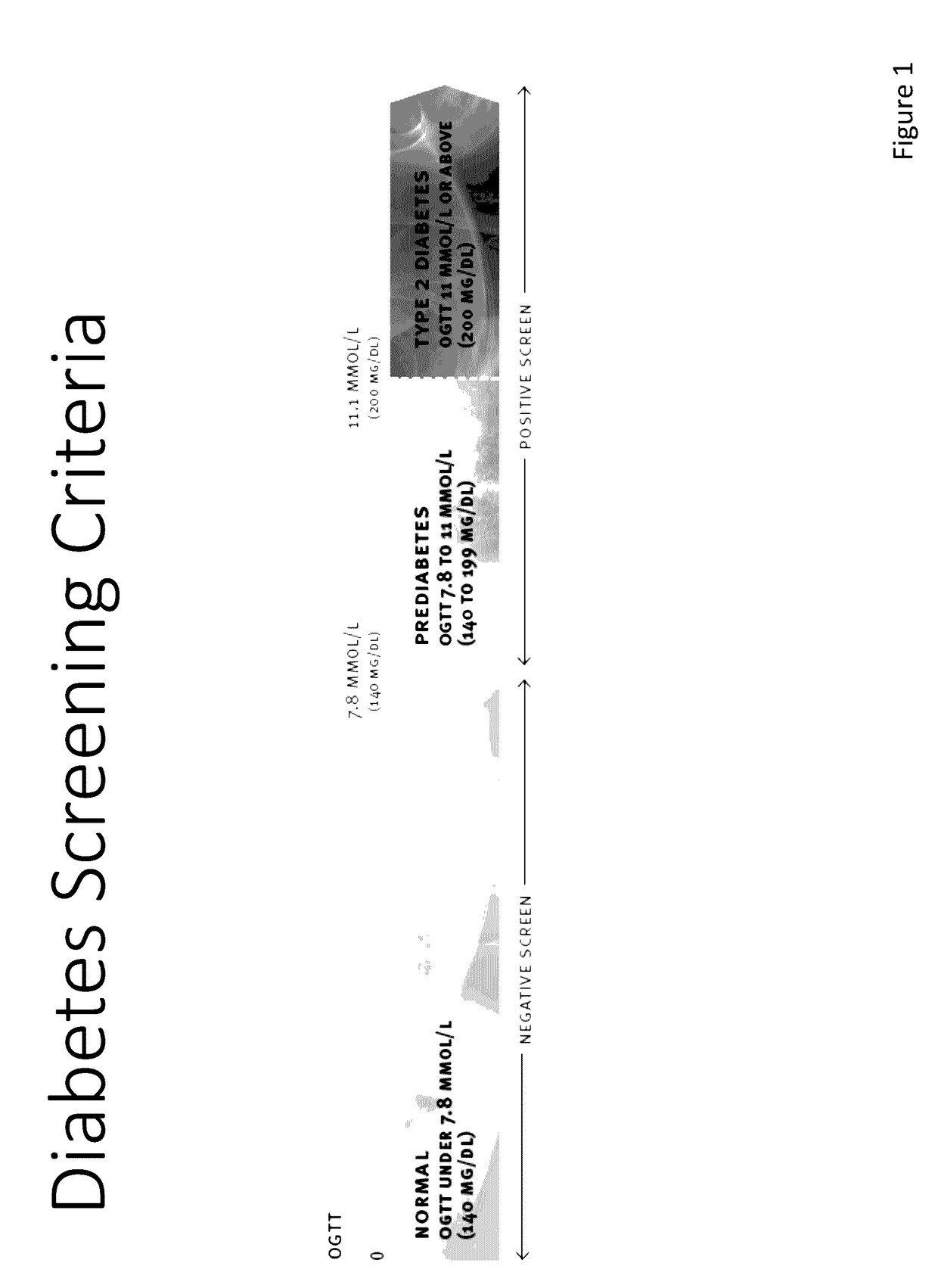Diabetes and Hypertension Screening by Assessment of Arterial Stiffness and Autonomic Function
a technology of autonomic function and arterial stiffness, applied in the direction of catheters, angiography, spectroscopy, etc., can solve the problems of reducing the chance of developing diabetes in individuals at risk, affecting the quality of life of patients, so as to achieve reliable, convenient, and cost-effective results
- Summary
- Abstract
- Description
- Claims
- Application Information
AI Technical Summary
Benefits of technology
Problems solved by technology
Method used
Image
Examples
second example embodiment
[0250]A second example embodiment of the system is shown in Figure. This example system utilizes a PPG measurement device located at the ear or forehead (1001) and finger (1002) with an ECG measurement system on the chest (not shown and optional in some measurement scenarios). The overall method of operation is similar to that previously presented but only one arm is utilized to generate the peripheral and central compliance assessments. The processing of the data also differs since the ECG and forehead based PPG information can be utilized to capture a pulse transit time that is preferentially specific for the central vascular system. Additionally, the pulse transit time as measured with the forehead PPG and the finger PPG is quite specific for arm transit time. The resulting information enables assessment of central and peripheral compliance as well as autonomic response. These measured parameters can be used to screen for both diabetes and hypertension.
[0251]The embodiment shown ...
PUM
 Login to View More
Login to View More Abstract
Description
Claims
Application Information
 Login to View More
Login to View More - R&D
- Intellectual Property
- Life Sciences
- Materials
- Tech Scout
- Unparalleled Data Quality
- Higher Quality Content
- 60% Fewer Hallucinations
Browse by: Latest US Patents, China's latest patents, Technical Efficacy Thesaurus, Application Domain, Technology Topic, Popular Technical Reports.
© 2025 PatSnap. All rights reserved.Legal|Privacy policy|Modern Slavery Act Transparency Statement|Sitemap|About US| Contact US: help@patsnap.com



